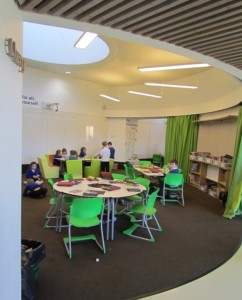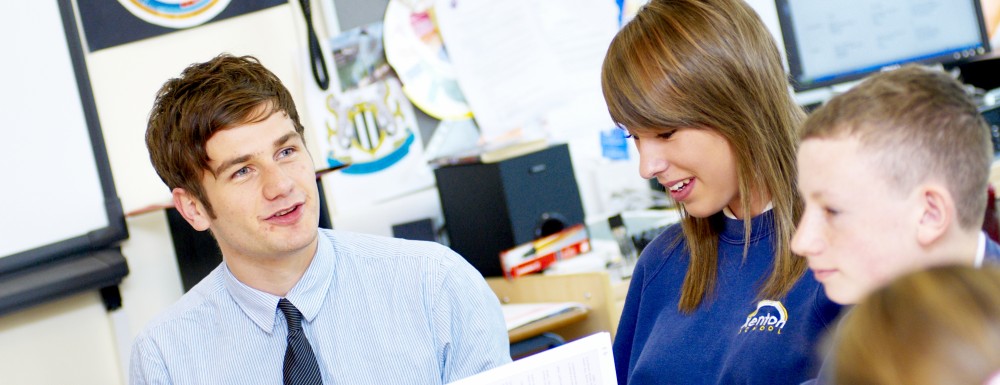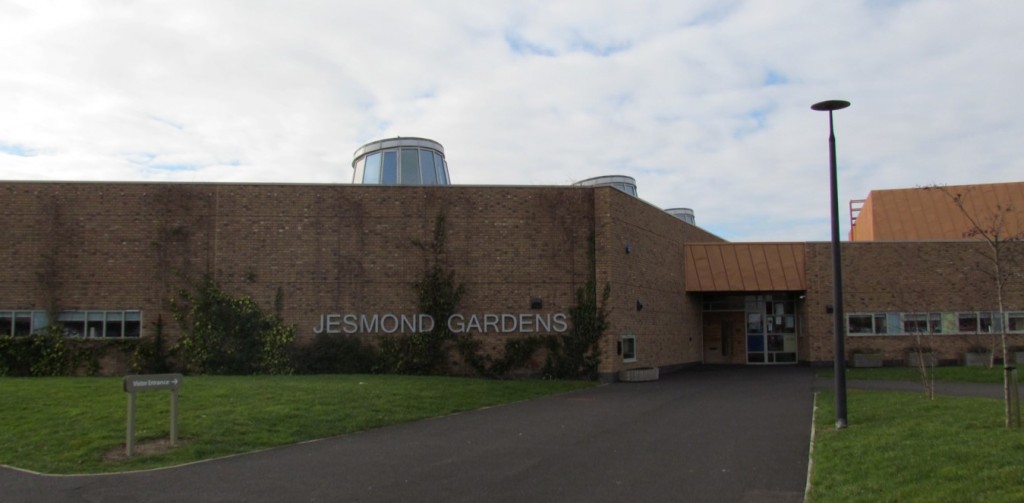Paula Cardellino is an academic colleague from Uruguay who has been visiting CfLaT and ECLS. Here she reflects on a visit to an unusual local School.
My name is Paula Cardellino, and I am an architect and a lecturer at the Faculty of Architecture, Universidad ORT Uruguay, Montevideo. Through the financial support of the British Embassy in Montevideo, Pam Woolner and myself have had the opportunity to work together in the development of future projects that will, hopefully, continue to build on the fundamental idea that school physical environments are intimately related to pedagogical approaches. From very different angles, we both argue for the importance of reaching a balance between the design of physical learning environments and the educational agenda.
During my 2 weeks visit to ECLS I had the chance to visit Jesmond Garden Primary School in Hartlepool together with Pam. The school facility was built 6 years ago with the Headtheacher´s ultimate aim to make it into a transformational school, not only in terms of innovative pedagogical ideas but also its physical environment. As she explained, “we didn´t want a new old building”..
The school has a distinctive design. With 3 cylinders popping out from the rooftop it stands out from the surrounding streets of houses, and suggests that something different is happening inside. Indeed, getting to see the old school before the new one, an old Victorian building, made it clear that the transformational educational agenda that the Headteacher aimed for needed parallel changes to the physical environment.
Upon arrival, we are greeted by Jane Loomes, the school´s Headteacher, a lively, very determined person, eager to show and tell us all about the design and building process.  During the conversation she tells us that previous to the start of the school design they visited various schools in the UK to get a better idea of what could be done in terms of building design. She felt, though, that some foundational ideas were clear from the very start of the process: flexibility of use of the learning spaces and the instrumentation of the superclass philosophy – units for 90 children with a team of teachers. This not only meant making best use of the staff resources (staffing) but also implementing innovative ideas to the school project such as acoustic solutions. Added to these challenges, there was a need to make it exceedingly comfortable. She, particularly, wanted the school to feel very warm, natural, airy, calm, relaxing; a cocoon from the outside world.
During the conversation she tells us that previous to the start of the school design they visited various schools in the UK to get a better idea of what could be done in terms of building design. She felt, though, that some foundational ideas were clear from the very start of the process: flexibility of use of the learning spaces and the instrumentation of the superclass philosophy – units for 90 children with a team of teachers. This not only meant making best use of the staff resources (staffing) but also implementing innovative ideas to the school project such as acoustic solutions. Added to these challenges, there was a need to make it exceedingly comfortable. She, particularly, wanted the school to feel very warm, natural, airy, calm, relaxing; a cocoon from the outside world.
During the design process, that took around 8 months, a number of meetings and discussions took place between the stakeholders (staff, pupils, parents) and the designer. Many topics were discussed during these meetings, but the main idea continued to be around the transformation of the educational agenda within the school building, touching on concepts such as ´sense of belonging´, ´school as a home´ and enjoyment of learning.
 From the walk around the school it is noticeable that from the heart of the school the use of curved shapes allow for the teaching-classroom areas to become real; though not welcomed at first, the use of curves enabled the inclusion of flexible arrangements within the learning spaces: even the toilets have an unusual circular shape. Three circles that can host up to 90 children compose the not very traditional classroom space. Separated by acoustic curtains the areas can become different teaching environments or turn into smaller places.
From the walk around the school it is noticeable that from the heart of the school the use of curved shapes allow for the teaching-classroom areas to become real; though not welcomed at first, the use of curves enabled the inclusion of flexible arrangements within the learning spaces: even the toilets have an unusual circular shape. Three circles that can host up to 90 children compose the not very traditional classroom space. Separated by acoustic curtains the areas can become different teaching environments or turn into smaller places.
 As I leave you now with my views on this very different school building you can consider if this is something that you would enjoy as a student, a parent or a teacher. It certainly felt to us that a transformation of the culture, practices and setting for learning has occurred at Jesmond Gardens.
As I leave you now with my views on this very different school building you can consider if this is something that you would enjoy as a student, a parent or a teacher. It certainly felt to us that a transformation of the culture, practices and setting for learning has occurred at Jesmond Gardens.
Hear more from Paula and Pam when they speak at an interdisciplinary discussion this Thursday: http://www.ncl.ac.uk/ecls/news/item/a-space-for-learning-developing-interdisciplinary-understandings-to-improve-school-premises

